Top 10 Oklahoma Sooners: Linebacker
Every Thursday this summer, SI Sooners ranks the top 10 Oklahoma Sooners at their respective positions. Today: linebacker.
-----
We thought offensive line was hard. We thought defensive line was impossible. And we thought running back was simply wrong.
But ranking the top 10 linebackers in the history of Oklahoma football turned into a herculean task that made the others look easy.
Among the Sooners’ star linebackers regrettably relegated to honorable mention status are a two-time All-American (Carl McAdams), the Nos. 2 and 3 tacklers in school history (Jackie Shipp and Travis Lewis), the single-game record holder with 28 tackles (Kenneth Murray), an iron-willed champion (Torrance Marshall) and even more All-Americans (Rufus Alexander, Jimbo Elrod, Kevin Murphy).
READ MORE TOP 10 SOONERS
Combining their college exploits with their NFL careers made it even more daunting to narrow down.
At OU, six linebackers were two-time All-Americans, and two were three-time All-Americans. Four Sooner linebackers are in the College Football Hall of Fame.
So naturally, we couldn’t settle on 10. Here are the top 11 linebackers in OU history, plus honorable mentions:
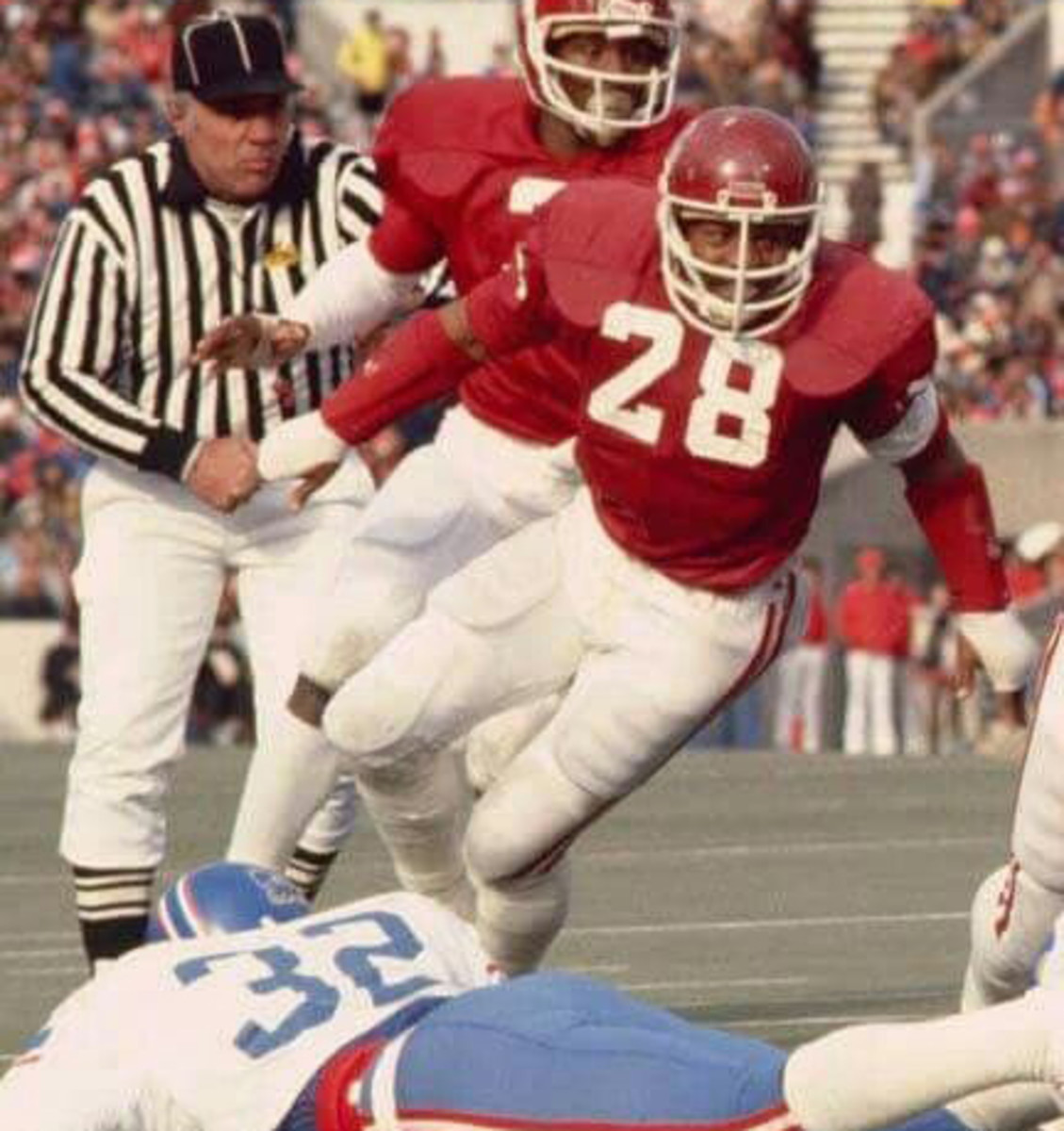
11. George Cumby (1976-79)
George Cumby came to Oklahoma from Tyler, TX, and became a two-time All-American inside linebacker for the Sooners’ famed 5-2 Okie defense. He was named Big Eight Defensive Newcomer of the Year in 1976, earned All-America honors as a sophomore in 1977, then repeated two years later as a senior, when he was accorded consensus honors. He also earned All-America recognition in 1978 from the Newspaper Enterprise Association. The 6-foot, 220-pound Cumby was a two-time Big Eight Defensive Player of the Year in ’78 and ’79 and finished his career fifth in school history with 405 tackles, including 160 as a senior in 1979, still fourth in school history. Cumby was a first-round draft pick of the Green Bay Packers in 1980, No. 26 overall, and played in 92 NFL games with 67 starts. In his second season in the league, Cumby had three interceptions and was named second-team All-Pro by NEA. He played six seasons with the Packers, one in Buffalo and one in Philadelphia, ending his career with five interceptions and six fumble recoveries.
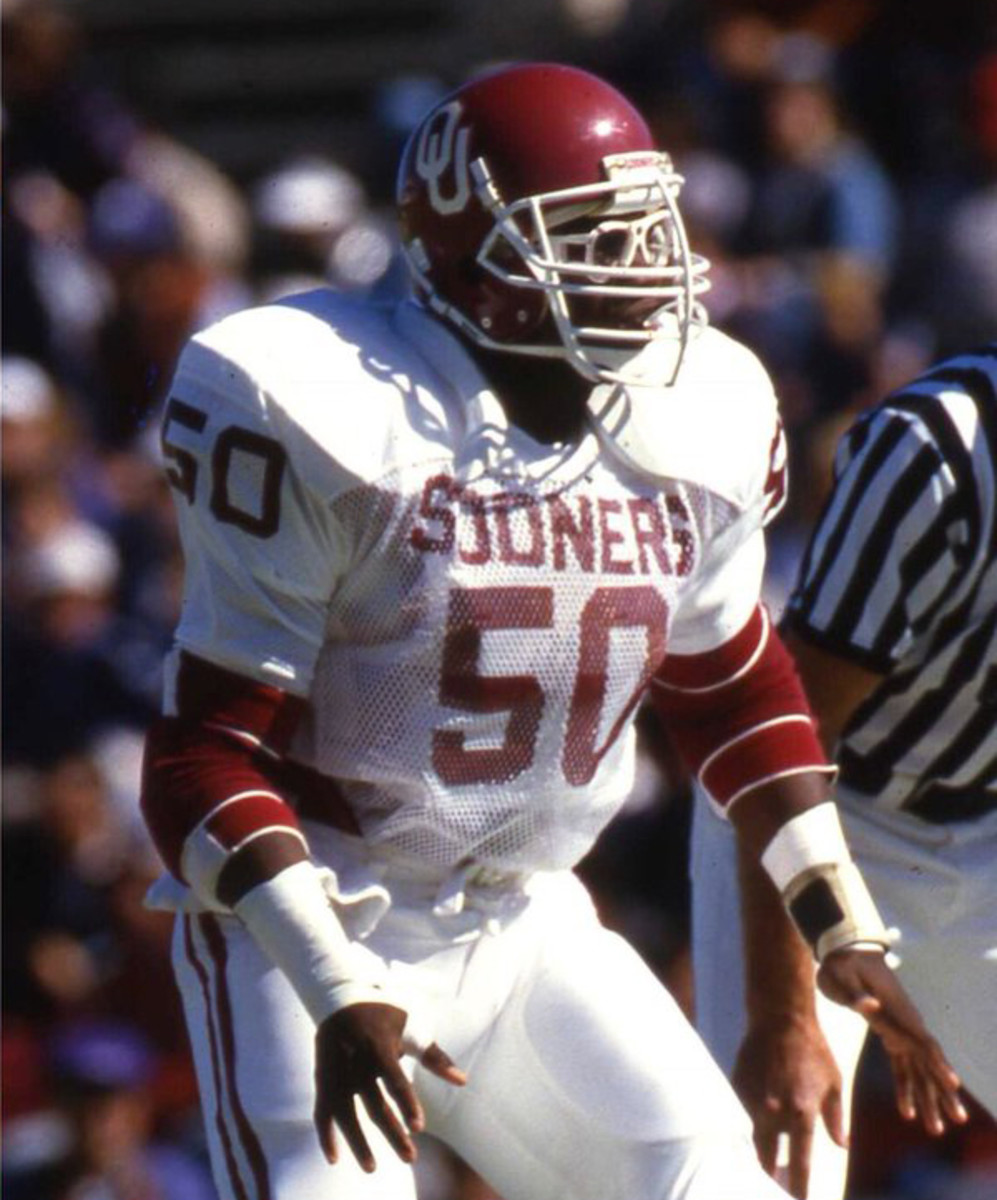
10. Dante Jones (1984-87)
Dante Jones arrived at OU from Dallas Skyline in 1983. After redshirting, he emerged as a solid player for two years as a backup, then emerged from Brian Bosworth’s shadow first by alternating with Paul Migliazzo, then earning the starting weakside job, then replacing The Boz in the Orange Bowl victory over Arkansas and winning game MVP honors. The following year, Jones was first-team All-Big Eight, Big Eight Defensive Player of the Year and a consensus All-American in 1987 and finished third in the voting for the Dick Butkus Award. The 6-foot-2, 221-pound Jones was a second-round pick of the Chicago Bears in 1988, and he played with the Bears for seven seasons, saw action in 92 games, made four interceptions and three quarterback sacks before finishing his career with the Denver Broncos in 1995.
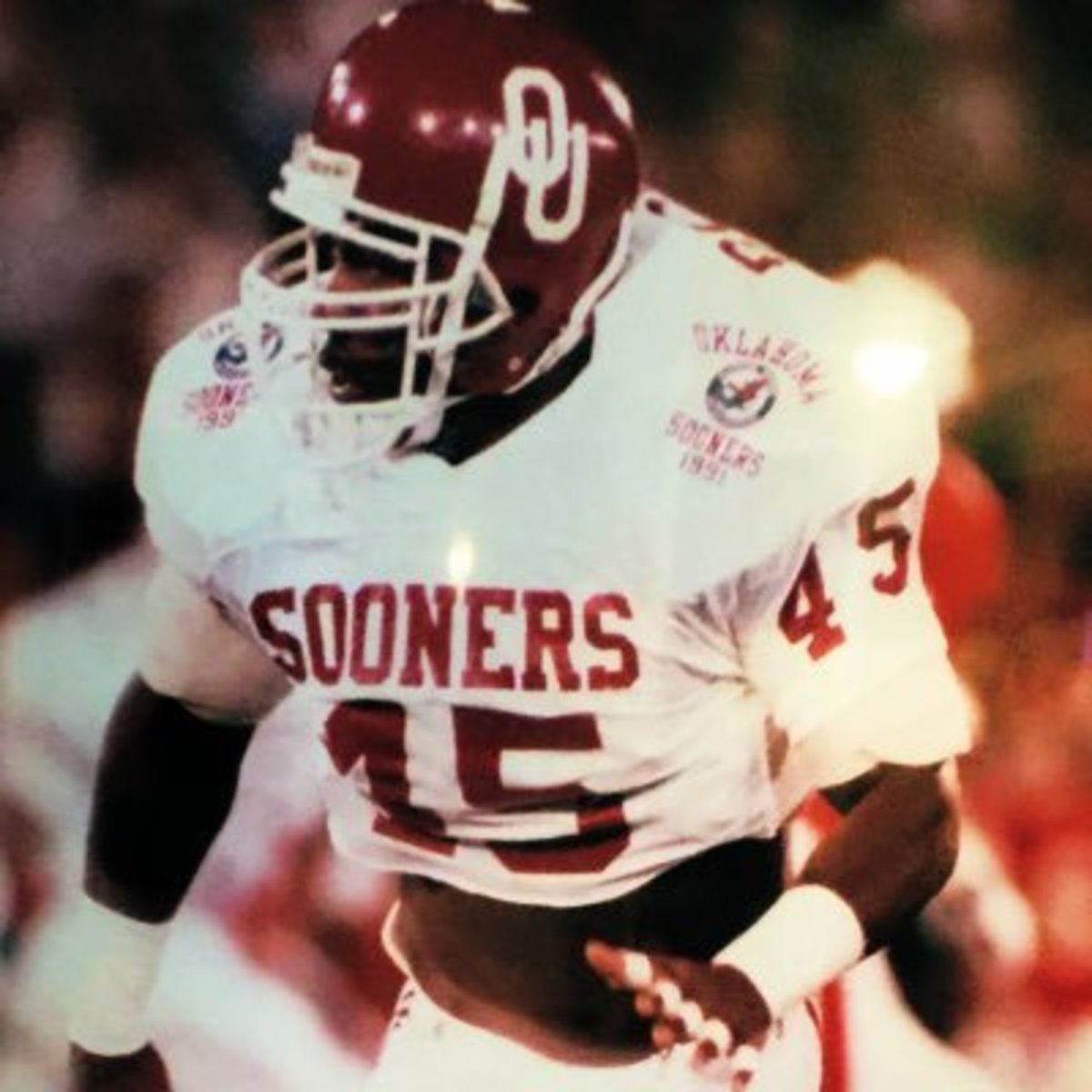
9. Joe Bowden (1989-91)
A high school All-American from Mesquite, TX, Joe Bowden played just three seasons after sitting out the 1988 season as a Prop 48 qualifier. But once he got on the field, he became a dominant force. He finished his college days with 286 tackles, three interceptions, three fumble recoveries, two fumbles forced, six passes broken up and two quarterback sacks. Bowden made a team-high 116 tackles in 1990, then led the Sooners again with 134 as a senior, when he was named All-American. Both of his interceptions that season were returned for touchdowns. The 5-11, 230-pound Bowden was a fifth-round draft pick of the Houston Oilers and he ended up playing in 139 NFL games and making 433 career tackles in nine seasons from 1992-2000. Bowden played eight years with the Houston Oilers/Tennessee Titans (including the 1999 Super Bowl loss to the Rams) before finishing his career in 2000 with the Dallas Cowboys.
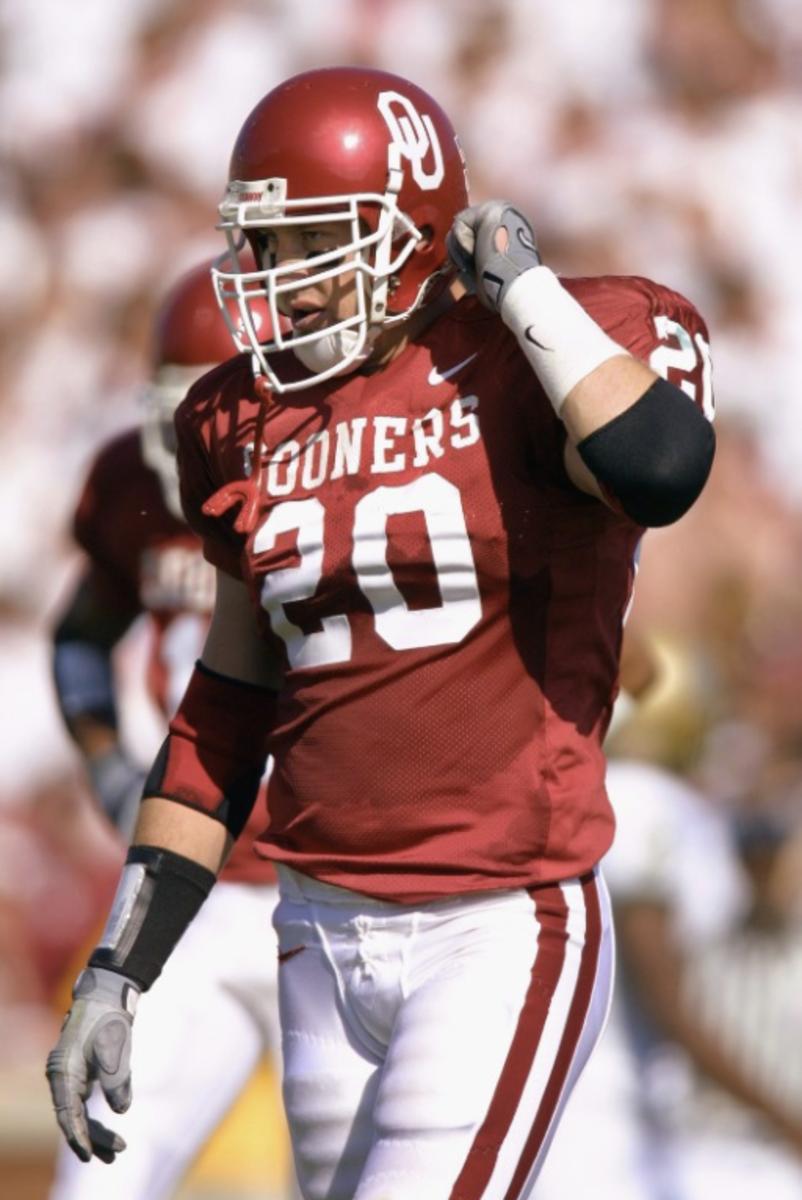
8. Rocky Calmus (1998-2001)
Rocky Calmus was a star running back at Jenks, OK, but when he signed with John Blake and the Sooners, he knew he would become one of the elite linebackers. Fortuned changed when Bob Stoops was hired in 1999, and Calmus became a three-time All-Big Eight and two-time consensus All-American at weakside linebacker. The 6-3, 235-pound Calmus was also the two-time Big 12 Defensive Player of the Year and restored OU linebacker glory in 2001 when he won the Butkus Award as the nation’s best college linebacker. Calmus’ contributions to the Sooners’ 2000 national championship run were unforgettable — especially his pick six interception in the Red River Blowout of Texas. Calmus, who always had a nose for the football, still owns the school record with seven career fumble recoveries. Calmus was drafted in the third round (No. 77 overall) by Tennessee in 2002, and he played for the Titans for three seasons before signing with Indianapolis in 2005. He never played for the Colts and finished an injury-plagued career with just 27 NFL games, 12 starts, two interceptions, one fumble recovery and 89 career tackles.

7. Teddy Lehman (2000-03)
The legend of Teddy Lehman began when he attended a Bob Stoops summer camp and ran a 40-yard dash in 4.4 seconds. A standout career as a linebacker and running back at Fort Gibson, OK, didn’t get him an OU offer, but his 40 time did. Lehman started at middle linebacker in 2001 (his greatest claim to fame as a sophomore was finishing off Roy Williams’ “Superman” play against Texas), and in 2002 he moved to the weak side, where he used that spectacular speed to patrol sideline to sideline. Lehman was named consensus All-American in ’02, and in 2003, he led the Sooners with 117 tackles and tied the school record for tackles for loss by a linebacker with 19. Lehman was named unanimous All-America in 2003 and won the Butkus Award as well as the Chuck Bednarik Award as the top defensive player in the nation. Lehman was a second-round pick of the Detroit Lions in 2004 and was the only rookie linebacker in the NFL to start all 16 games, finishing with 102 tackles. He signed with Tampa Bay as a free agent in 2008 and also spent time with Detroit and Buffalo. He later tried out with Jacksonville in 2010, but injuries ultimately limited Lehman to just five seasons in the NFL, where he finished with 151 career tackles and two interceptions.
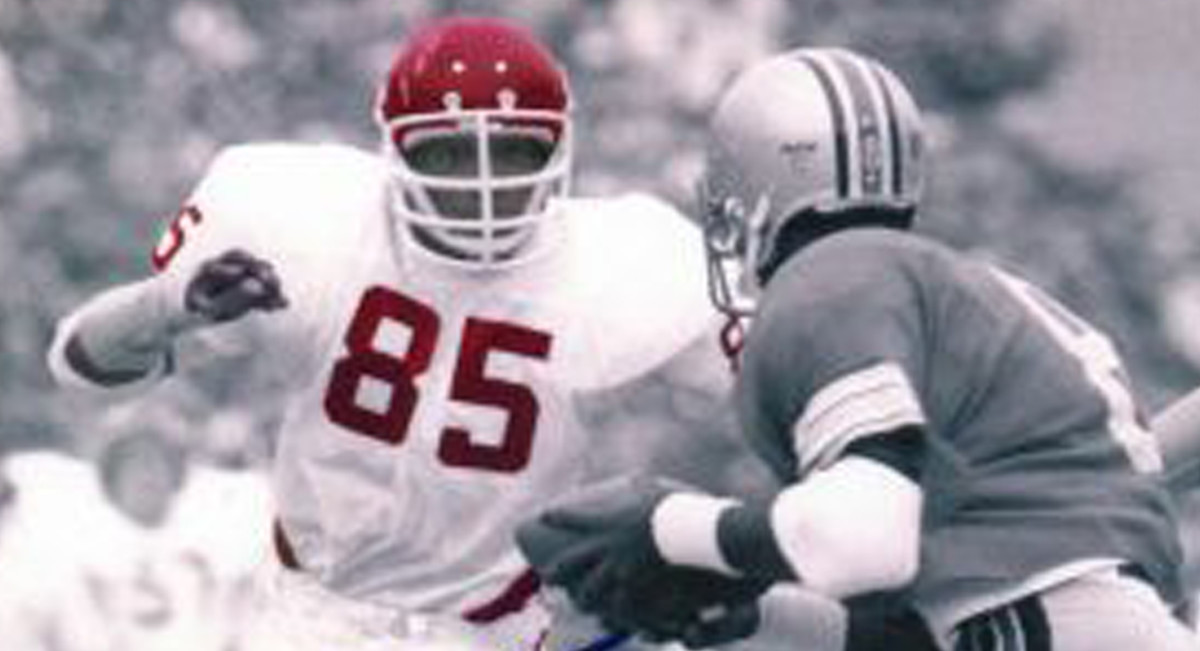
6. Daryl Hunt (1975-78)
In terms of productivity, Hunt became the defensive equivalent of any offensive star the Sooners ever had. Coming to OU from Odessa, TX — he was the first African-American football player at West Texas powerhouse Permian, and was the first to make the Permian Wall of Fame — the 6-3, 229-pound Hunt was endlessly smart and hopelessly unrelenting as he shattered the OU school record for career tackles. Hunt was a two-time All-American in 1977 and ’78, leading the Sooners in tackles three times and ultimately setting the career tackles mark so high — 530 — that it might never be touched. As a sophomore, Hunt set the OU single-season mark with 177 stops (only Jackie Shipp has topped that with 189 in 1981), then added 159 as a junior and 157 as a senior. Those totals now rank second, fifth and sixth in school history. Hunt also has three of the top 10 individual games, with 21 tackles against Missouri in 1977, 20 against Iowa State in 1976, and 19 against Vanderbilt in 1977. He collected six fumble recoveries during his career, tied for the second-most ever behind Calmus’ seven. Hunt became a sixth-round pick of the Houston Oilers in 1979 and played in 78 NFL games (including 73 in a row) in six seasons with the Oilers, including 40 starts. He had two fumble recoveries and two sacks, and in the strike-shortened 1982 season, Hunt started all nine games and led the Oilers with 85 tackles, including a career-best 17 tackles against the Cincinnati Bengals. Hunt died in 2010 at the age of 53.
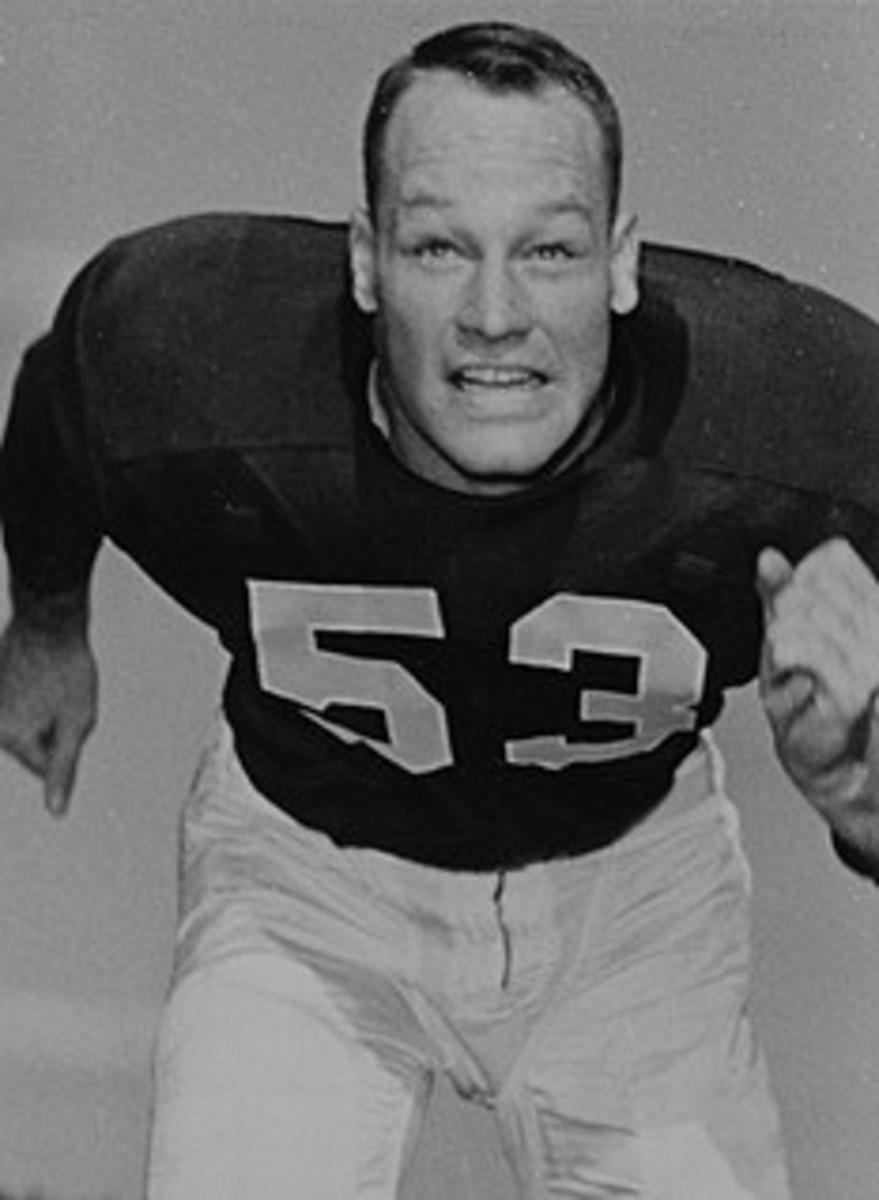
5. Jerry Tubbs (1954-56)
Was Jerry Tubbs better as a linebacker, or as a center? The 6-foot-2, 221-pound Tubbs came to OU from Breckenridge, TX, to play for Bud Wilkinson, and he excelled at both. Tubbs was a co-captain and three-year starter on OU teams that went 31-0 during his tenure. As a center, Tubbs earned unanimous All-America honors and was named UPI Lineman of the Year. As a linebacker, he intercepted three passes in the 1955 victory over Texas. And as the best overall player in college football in 1956, Tubbs won the Walter Camp Trophy and the Knute Rockne Memorial Trophy and finished fourth in the Heisman Trophy voting (behind teammate Tommy McDonald). Tubbs was the 10th overall pick in the first round of the 1957 NFL Draft by the Chicago Cardinals. He was traded to San Francisco in 1958, and in 1960, he was acquired by the Dallas Cowboys in the NFL Expansion Draft. In 1962, he made 149 tackles and was one of the first Cowboys voted to the Pro Bowl. He played most of eight seasons playing linebacker for Tom Landry, retiring once and becoming a player-coach twice before finishing his career on the sideline for the 1967 “Ice Bowl” NFL Championship Game loss to the Packers. He played in 119 NFL games with 100 starts, made 17 interceptions and 11 fumble recoveries. In 1996, Tubbs was inducted into the College Football Hall of Fame. He died in 2012 at the age of 77.
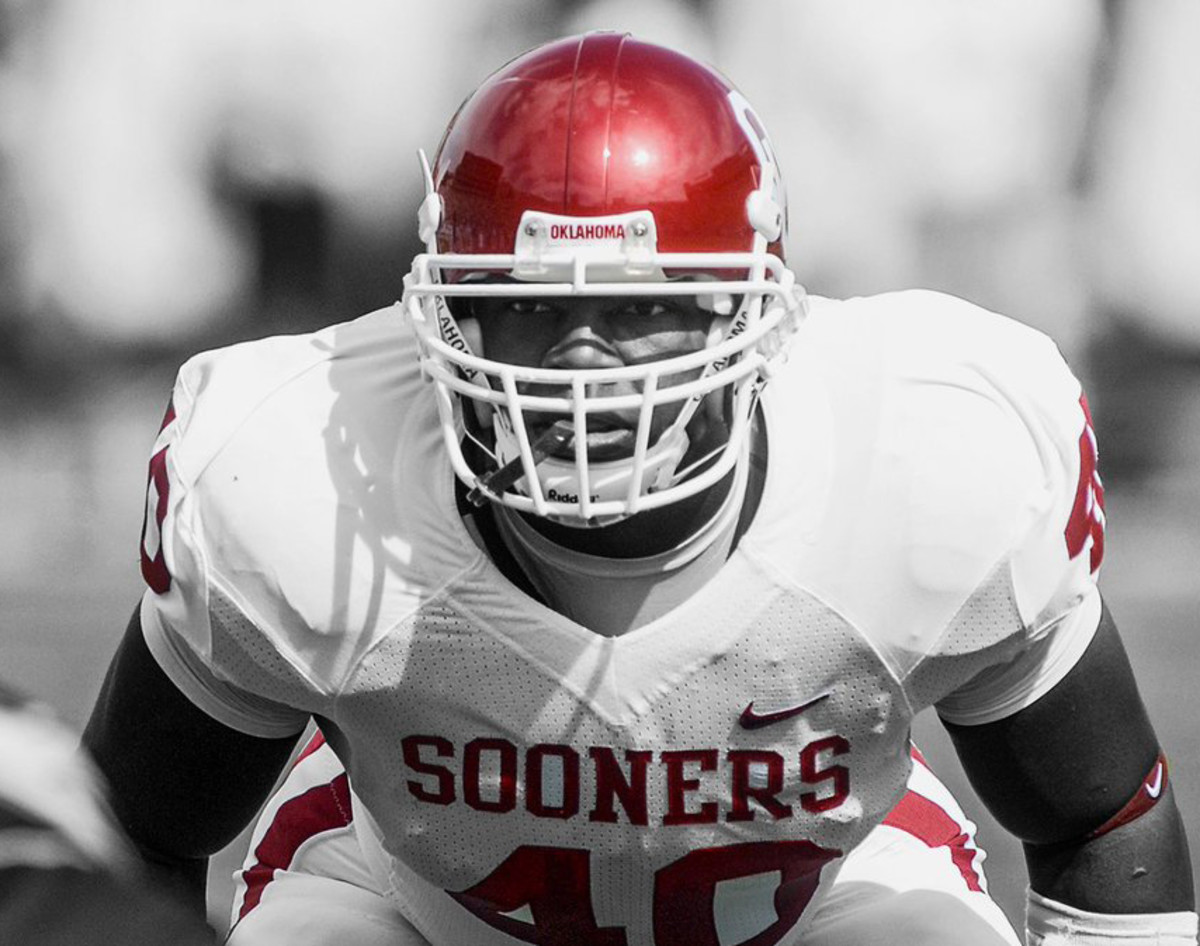
4. Curtis Lofton (2005-07)
Curtis Lofton grew up a Cowboys fan in Kingfisher, OK, and almost went to Oklahoma State — he called Les Miles to commit, but nobody answered — before Brent Venables sold him on OU. The 6-foot, 240-pound Lofton played almost exclusively on special teams in 2005, became a reliable backup to Zach Latimer in 2006, and then exploded as a consensus All-American in 2007, ranking third in the nation with 157 tackles (the most at OU in 16 years and still sixth-most in school history). He was named Big 12 Defensive Player of the Year and became renowned for causing havoc — turnovers — with what Venables called his “meat cleaver” tackles. He forced a goal line interception to seal a tight win at Iowa State, forced a goal line fumble to save a touchdown in a close victory over Texas, and returned a fumble for a touchdown in a comeback win over Missouri before finally pulling Chase Daniel and the Tigers apart in the Big 12 title game. Lofton left early for the NFL Draft, became a second-round draft pick and played four seasons for Atlanta, three in New Orleans and one in Oakland. Lofton leads all former Sooners in the NFL with 948 tackles, including a string of 133, 118, 147, 123, 124 and 144. He was a 16-game starter for six straight seasons and also piled up 42 tackles for loss, eight quarterback sacks, three interceptions, five fumble recoveries and, thanks to those meat cleavers, 11 forced fumbles.
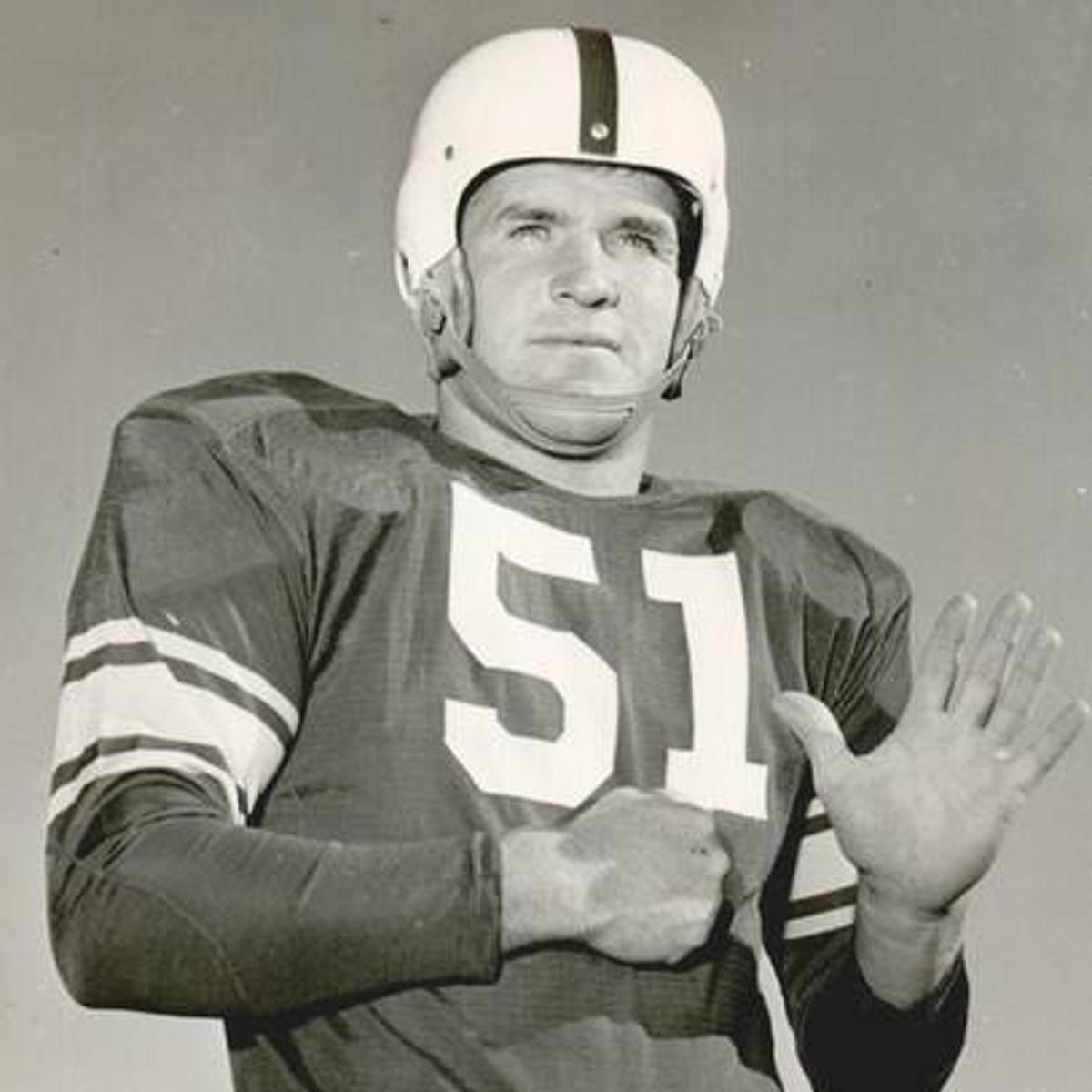
3. Kurt Burris (1952-54)
While older brother Paul “Buddy” Burris was the Sooners’ first three-time All-American and the first of four Burris boys from Muskogee to play for Bud Wilkinson, it was No. 2 brother Kurt Burris who followed him and became a College Football Hall of Famer. Bigger and faster than his middle-guard big brother, the 6-1, 210-pound Burris was, like Tubbs, a standout center and linebacker for some of Wilkinson’s best teams. Burris not only was named consensus All-America and Lineman of the Year in 1954, but also finished second in the Heisman Trophy voting to Wisconsin’s Alan Ameche — the highest Heisman finish for any player who didn’t carry the football. Burris started his career blocking for '52 Heisman winner Billy Vessels, then ended it with 19 straight victories, the start of the Sooners' epic 47-game winning streak. While his brother went on to play linebacker for three years for the Green Bay Packers, Burris was a first-round draft pick of the Cleveland Browns in 1955 (No. 13 overall). He declined to play with the Browns, however, instead opting to play in the Canadian Football League, where he starred for the Edmond Eskimos, Saskatchewan Roughriders and the Calgary Stampeders from 1955-60. He won two Grey Cup championships with the Eskimos. Burris died in 1999 at the age of 67, and he was inducted into the College Football Hall of Fame in 2000.
2. Rod Shoate (1972-74)
In terms of sheer speed, no linebacker ever ran like Rod Shoate. Undersized coming out of Spiro, OK, at 6-1 and 215 pounds, Shoate played with a fearless, full-throttle mentality that cast fear in opponents. He finished his college career with 426 total tackles (a school record at the time), became just the second player in school history (behind Burris) to be named first-team All-America three times, and became a member of the College Football Hall of Fame when he was inducted in 2013. He set the school record in 1974 with 21 tackles against Texas (still tied for the sixth-most in OU history) and finished his senior year with 155 stops (eighth-most in OU annals). In his three seasons, Shoate led the team with 145, 126 and 155 tackles. Shoate was drafted 41st overall in the second round by the New England Patriots, where he played for former Sooners head coach Chuck Fairbanks, but his NFL career was slowed by injuries — a broken leg in 1975, a knee injury in 1976 — before becoming a pass-rush specialist who led all NFL outside linebackers with 22.5 quarterback sacks from 1977-81. In six seasons with the moribund Patriots, Shoate played in 79 games, made 64 starts, had 352 total tackles, 15.5 tackles for loss to go with 22.5 sacks, 18 passes defensed, five interceptions, five forced fumbles and seven fumble recoveries. Shoate tried to resurrect his career in the USFL, playing for the Washington Generals in 1983 and the Memphis Showboats in 1984. Shoate died in 1999 at the age of 46.
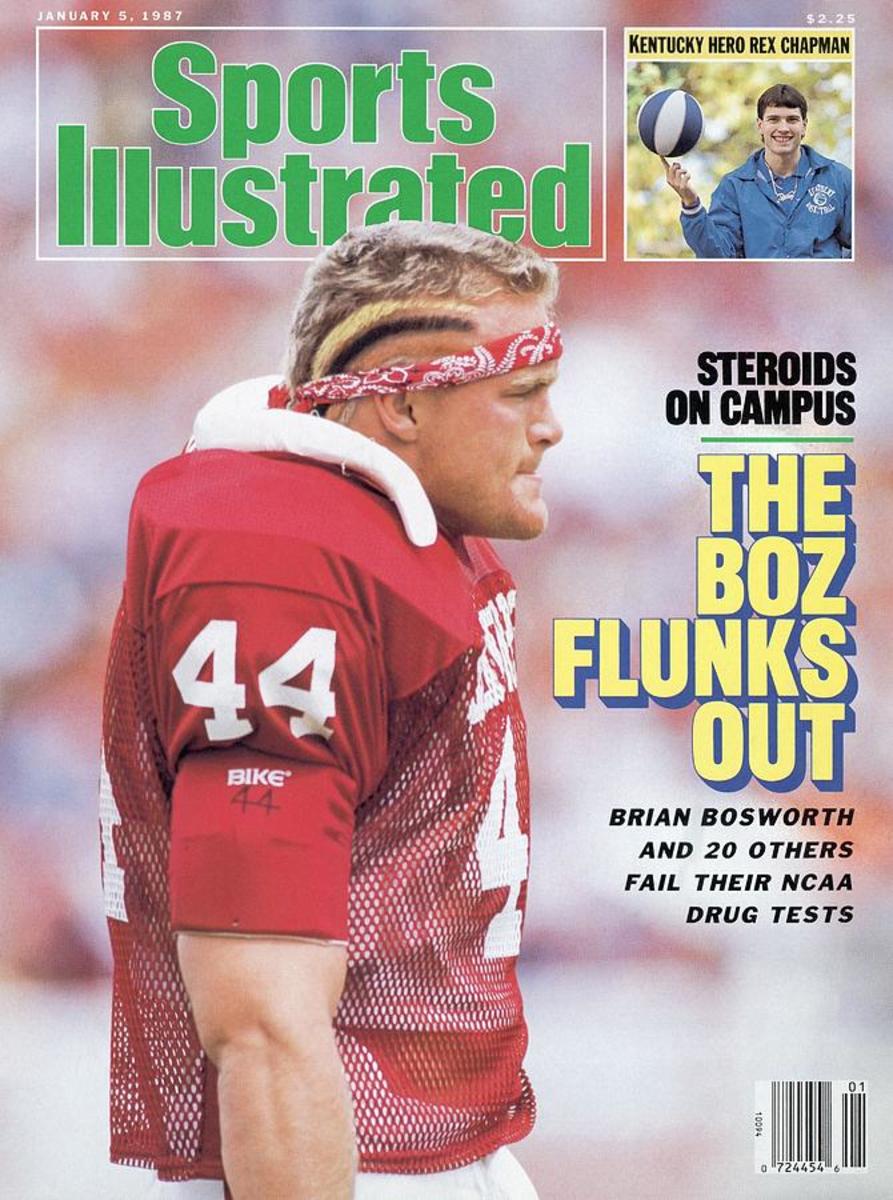
1. Brian Bosworth (1984-86)
Despite all the flash and all the trash, despite the wacky hairdos and all the brash, Brian Bosworth was one of the greatest to ever play linebacker in college — an undeniable force of nature, an exquisite combination of instinct, attitude and ability whose football shelf life was, appropriately, that of a shooting star. At 6-2 and 245 pounds, Bosworth was a prototype linebacker for the 1980s: fast, fearless and sharp as a spiked mullet. Coming out of Irving, TX, Bosworth found a kindred spirit in Barry Switzer, who nurtured Brian on football and unleashed “The Boz” on pop culture. Bosworth was named All-Big Eight in 1984, then in 1985 and ’86 was named unanimous All-America, was given the first-ever (and the second) Butkus Award as the nation’s best linebacker, and in 1986 finished fourth in the Heisman Trophy voting. In 1999, Bosworth was named to Sports Illustrated’s College Football All-Century Team — one of just nine linebackers on the squad — and College Football News ranked Bosworth No. 30 on its list of the 100 greatest players of all time. Other than mouthing off about the game’s diverse color wheel (burnt orange made him puke, he said, and UCLA’s pastel blues and golds were not manly football colors), Bosworth occasionally found himself in real trouble, too — once by the NCAA, who suspended him for the Sooners’ 1987 Orange Bowl victory over Arkansas (he tested positive for steroids) and once by Switzer, who dismissed The Boz for wearing a T-shirt on the sideline of that game declaring the NCAA as “National Communists Against Athletes.” Bosworth later joined the NFL’s supplemental draft, where the Seattle Seahawks picked him up in the first round. Bosworth’s NFL career was a mess, however: he lasted just three seasons, played in 24 games (all starts) and finished with 175 tackles and three fumble recoveries. He’s famous for getting run over by Bo Jackson at the goal line (Jackson ran for 221 yards and three touchdowns that day), but he’s just infamous for having arthritic shoulders that ultimately forced him out of the game and into acting (his filmography consists of 21 credits). Bosworth got $11 million for his NFL career and another $7 million from an insurance claim on his injuries before embarking on his film career. In 2015, Bosworth was inducted into the College Football Hall of Fame.
Honorable Mention
- Kurt Burris (1951-54)
- Carl McAdams (1963-64)
- Jimbo Elrod (1973-75)
- Jackie Shipp (1980-83)
- Kevin Murphy (1981-83, ’85)
- Torrance Marshall (1999-2000)
- Rufus Alexander (2004-06)
- Travis Lewis (2008-11)
- Kenneth Murray (2017-19)
